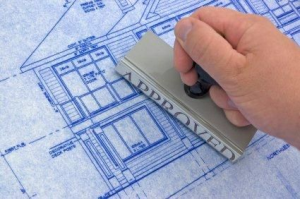There are several aspiring architects among our readers who want to build a career in one of the most prestigious fields. Architects make a lot of money which draws in students from all walks of life. The job involves a lot of creativity so it appeals to artists as well, and there are even applications of game design that entices younger generations.
All this is amazing but what does an architect do exactly?
It’s not just about doodling a design of a building and visualization of how they would look in your mind. An architect’s work is actually quite tough and requires a lot of discipline. You need to know about zoning laws and all related ordinances, possess a licensure to undertake architectural construction projects, have a thorough understanding of construction costs and building sustainability, and determine the environmental impact of the building you design.
These sound complicated when strung together but don’t worry. Today, we’ll discuss the different aspects of an architect job so you know what you need to do and what to expect in your future as a licensed architect.
What different job functions do architects perform?
You see, being an architect is not just about designing the exterior of buildings and drawing blueprints. There are different types of architects and they each contribute to the process in their own way. Of course, you could join a degree program and cover all the bases, which would take a little longer but you’d know how to design everything.
However, most architects prefer to choose their job description as per their forte and design certain specific aspects of properties rather than the whole thing. So let’s take a look at what type of architect you could be and what would you need to do:
1. Designing residential properties
Architectural designs for residential buildings involve a lot of standardizations introduced during the industrial revolution. These structures need to be compliant with the zoning laws and building codes in order to qualify as legal construction.
A residential architect must measure the area available for construction and devise an architectural design for the homeowners.
It starts with the building materials, designing the blueprint for the property, project management to oversee the basic outline of the house as well as the foundation and the plumbing that comply with building codes. They must also account for structural calculations involving the load-bearing, the quality of the raw materials, the feasibility of the building design, and the sustainability of the structure.
They also have to make sure that the property is built as per the local zoning laws.

Image credits: alamy.com
Read also – Which Interior Design Jobs Have The Best Pay?
2. Designing commercial office buildings
Commercial buildings have a different set of rules as compared to residential properties.
Architects who design office buildings, commercial stores, high schools, colleges, shopping malls, etc. need to bear in mind the different foundation elements. These buildings require more load-bearing capabilities because of the increased foot traffic and massive amounts of furniture.
Structural engineers play a major role in these construction projects as the buildings must support the excessive plumbing issues and earthing the electrical work. Due to the massive influx of movement, these buildings require more composite than residential buildings so they don’t collapse.
That’s what commercial architects do. They ensure that the design plan complies with the basic necessities and upholds the structural integrity of the building plan.
3. Designing the interiors of a property
Interior designers are architects too.
Planning the internal structure, floorplans, feasibility of natural light and air circulation, air conditioning, structural-compliant stairwells, and even the basic designing of where everything should go requires a special set of skills.
The interior design architects have to account for where the circuits and plumbing open up, the ideal location for wardrobes, furnishing, light fixtures, etc. They can create computer-aided designs that befit the client’s needs and work around the integral planning of the building.
Knocking down walls to create an open-planned room or choosing the basic elements such as door frames, window design, shelving, counters, or even installing wall-mounted structures is what interior design architects do. It is a lot easier to plan these building designs with the help of apps such as Foyr Neo, so if you’re an aspiring architect, you should really subscribe to it.
4. Designing the landscape
Landscape architects are specially trained to understand the ecological balances of a given area.
These architects are responsible for not only planning the landscape of a home but sometimes even the entire outdoor spaces around a neighborhood.
These landscape architects must take into account the soil structures and what kind of plants, trees, shrubs, etc. would grow best in the given environment. Not every type of soil is compliant with every ecological growth. They have to ensure that the soil is sturdy enough to hold down the roots of large trees so they don’t topple over during a storm and cause injuries to the residents.
Another important aspect of landscape architecture is to determine which living organisms have a positive environmental impact. For instance, rock gardens and succulents serve a better purpose in hot climates such as in California. However, the landscape of a suburban house in New York looks and feels better with flowering shrubs and planters for vegetable gardens.
Landscape designing is critical work since these natural elements contribute to the wellness of the residents, be it a home or an entire block. Therefore, the architects’ work for landscaping requires extensive planning and forethought.
5. Designing energy-efficient projects
In current times when the economic impact of energy resources is constantly on the uprise, architects who can plan energy-efficient architectural designs are in high demand.
What these architects do is evaluate the structural necessities of the building to develop a plan that supports more natural energy consumption rather than non-renewable power sources. They plan the installation of solar panels and water recycling techniques to make a building more self-sufficient.
You see, water consumption is charged in most areas due to the growing shortage in the environment. The water tables have declined and the ability to recycle the used water and treat the sewage plants effectively goes a long way into reducing your water bills and the overall consumption. Similarly, installing solar panels help make the building self-sufficient. Most of the electricity consumption is reduced and the commercial or residential building sustains solely on renewable energy during the day.
These architects are skilled with aerodynamics and the natural flow of light, air, etc. throughout the property. They understand how materials interact with each other and allow the natural elements to flow with ease. The architectural designs include these elements to control the depletion of non-renewable resources.
6. Designing industrialization projects
Industrialization projects include various aspects of commercial properties and combine them with the special needs of industrial ground.
To design buildings for industrialization, architects need to bear in mind the weightage of machinery, manufacturing plants, raw materials, spacing of the warehouse, etc. These components play an important role in the industrialization process.
Another pivotal aspect of industrial architecture is the materials used for the construction project. Since these buildings house chemicals and raw materials that interact with the natural environment, architects have to be careful about the composites that they use.
Safety measures are a necessity in industrial architecture therefore these architects need to understand the components and their reactivity in depth.
7. Designing urban projects
Lastly, urban architects are technically responsible for designing everything within a community.
Let’s say a town is in serious need of a makeover. These architects will plan the zoning locations for residential and commercial properties. Then they have to design the roads and pathways that connect these buildings to each other. Finally, they need to design the landscape of the town too.
Each of these elements that they plan serves a special purpose in the community. An industrialized area that is disconnected from civilization creates a nuisance in terms of commute. Similarly, if residential properties do not have access to necessities such as grocery shopping, hospitals, schools, and entertainment facilities then the residents are going to face big problems during an emergency.
Introducing landscape also serves a special function. It purifies the environment and supports a healthy ecosystem, which in turn affects the living standards of humankind.
Urban architects take the political, cultural, and economic environment to design the urban setting so that every element serves a valuable purpose. Their designs include safety measures as well in order to allow harmonious living among the populace. This is why they need to ork in close accordance to civil engineers.
Conclusion
You see, there is a wide scope in the field of architecture. It all starts with a dream but you need to pursue a bachelor’s degree and preferably even a master’s degree if you want to learn all the important aspects of the field. Then you need to pass your registration examination with the National architectural Accrediting Board or the NCARB, which is commonly known as the National Council of Architectural Registration Boards.
To become a licensed architect at architecture firms or to start your own business, you also need to be certified under the AIA or American Institute of Architects. There is a lot of studying involved but you need not fear.
In order to learn the ins and outs of the field, there are handbooks and guides designed for architects. One such guide is the BIM, which is a Building Information Modeling handbook with all the necessary material you need to know. It covers everything from building code, construction drawings, construction documents, drafters and planners that you need to use, construction management on construction sites, what materials to use and their calculation, and so much more. As an aspiring architect, get a copy and learn the basics before you design buildings.
An architect’s job is really interesting and rewarding but you need to put in the hours if you want to build a successful career out of it.










Leave A Reply